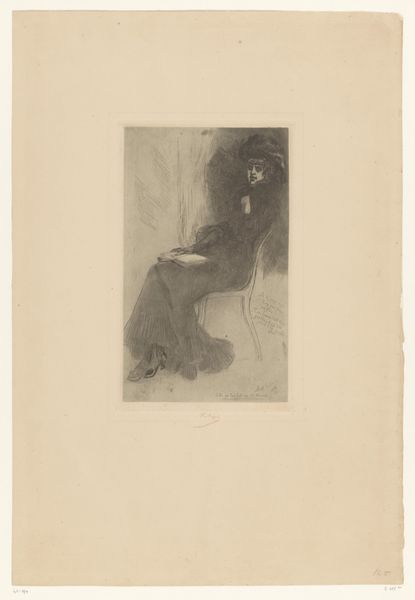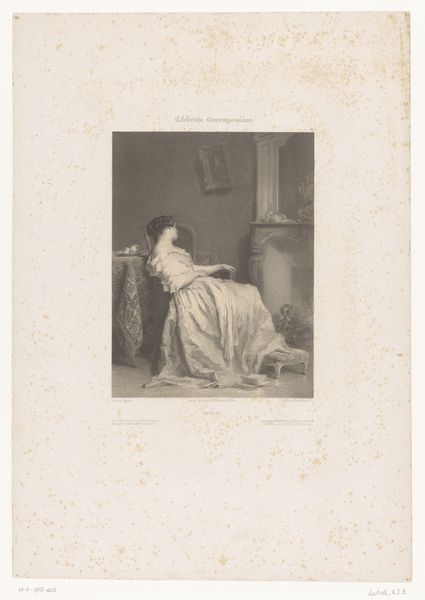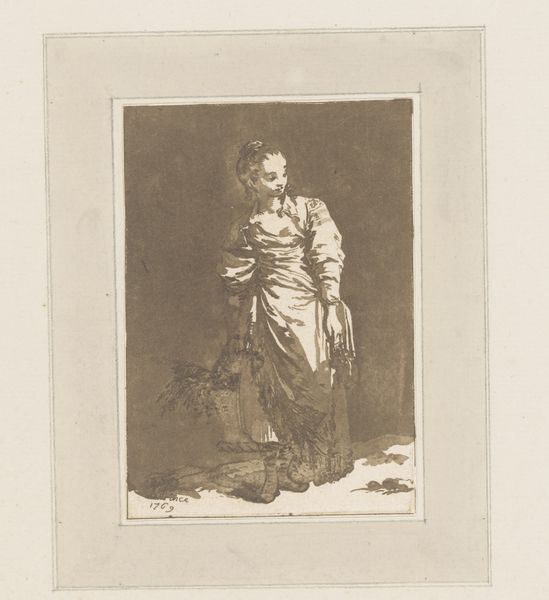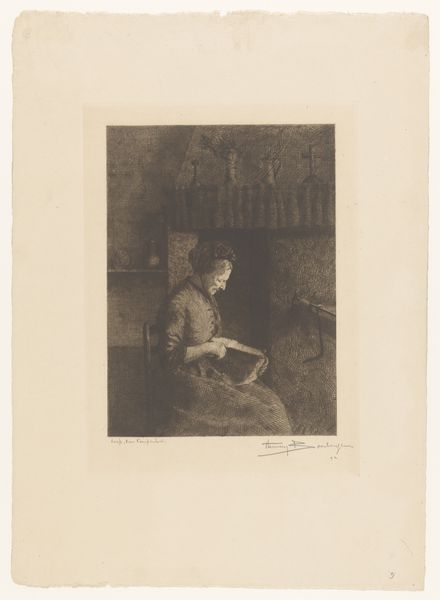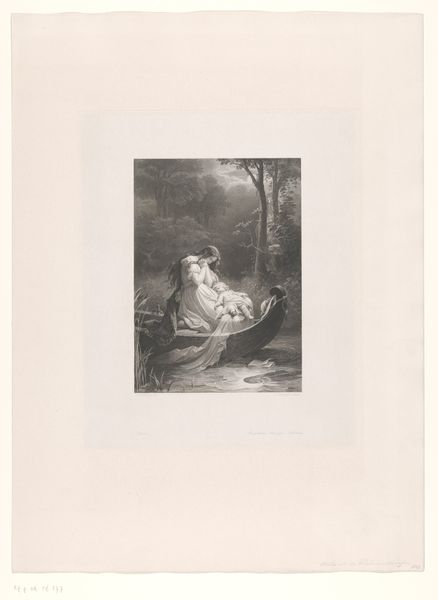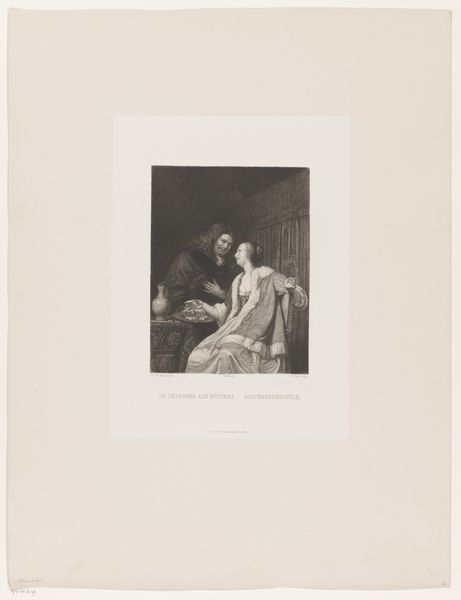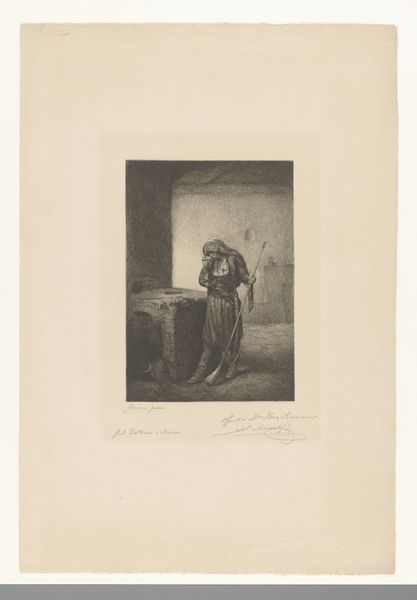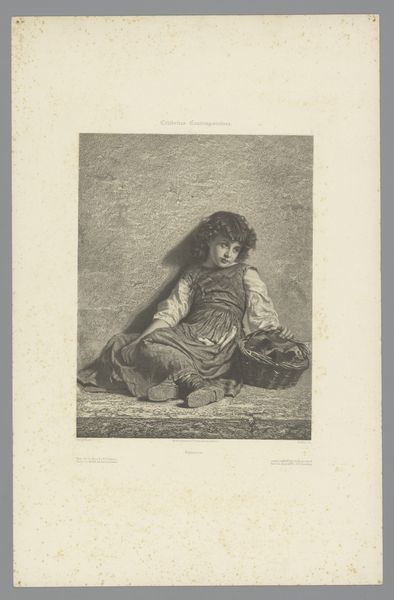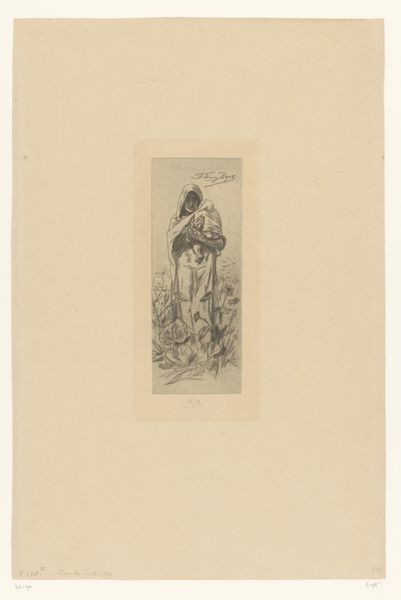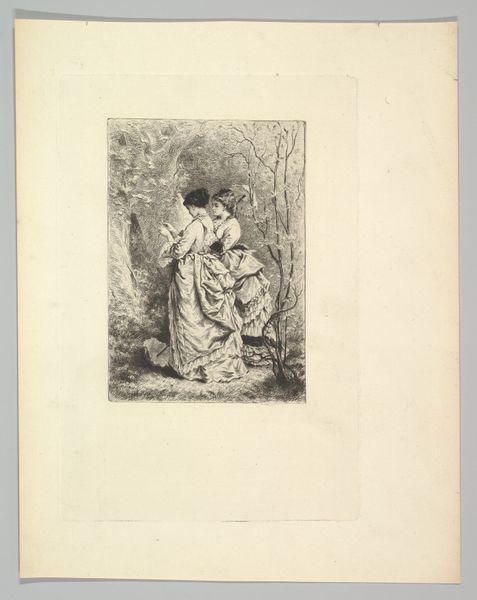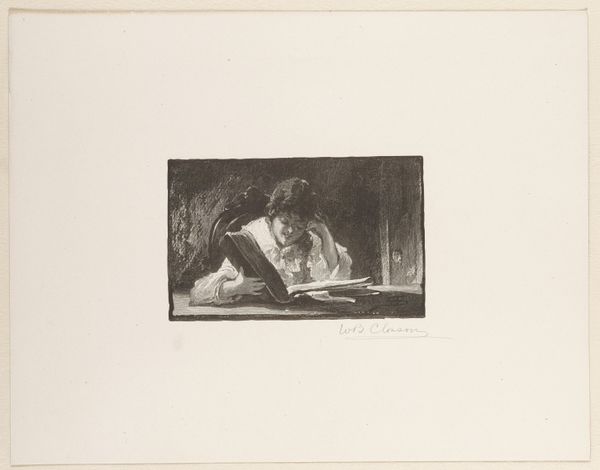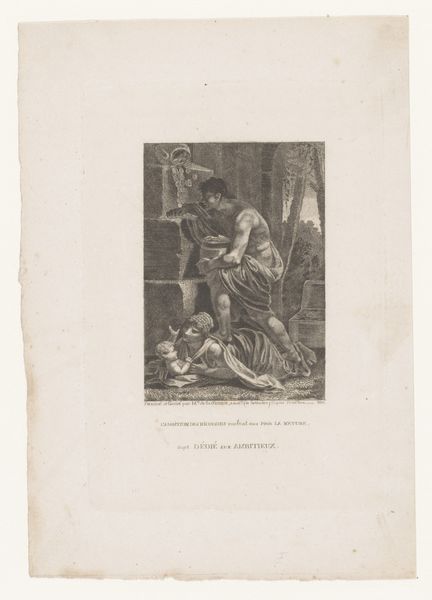
drawing, print, paper, graphite
#
portrait
#
pencil drawn
#
drawing
#
light pencil work
# print
#
pencil sketch
#
figuration
#
paper
#
pencil drawing
#
graphite
#
pencil work
#
realism
Dimensions: height 415 mm, width 290 mm
Copyright: Rijks Museum: Open Domain
Curator: Looking at Nellie Honig’s "Sims rustuurtje", created after 1892, what's your initial take on it? It’s rendered with graphite on paper, a print really, so multiples could be made. Editor: The somber mood really strikes me first. It’s also about the light, that hazy sort of enclosure, isn't it? Then the material of the print, the reproducible aspect of it, contributes to how widely it could be viewed. Curator: Right. Prints democratized images in a way painting simply couldn't. This is a delicate realism achieved with graphite. The monkey seems to be lost in thought, contemplating something with a seriousness we might usually associate with humans. I can sense her precise pencil strokes, the pressure she applied to build form and shadow. What was she going for here? Editor: Well, circuses and zoos were booming at this time and such entertainment became widely accessible. Animals were removed from their habitat and placed on display in the social realm. Considering that, I interpret the monkey's contemplation as a poignant comment on captivity and the spectacle of animal display, quite an institution by the late 19th century. Curator: I appreciate you bringing up that point because, it speaks volumes about social practices in her time. Yet what are your thoughts on the surface or materials used in this drawing? It looks like a high-quality paper that accepted graphite well to show details and allow mass production of the image for viewers like you. Editor: Absolutely, and the way it circulates in the art world is part of that story. This print existing today through archival holdings or displayed in museums changes the meaning and speaks of its enduring relevance beyond its initial market and time. The distribution network really defined the image’s reach, even now. Curator: Exactly, it adds new layers, and it forces us to ask, "How does it function culturally, and where is the value embedded?". I am glad this simple "Sims rustuurtje" can allow you to see past the image and notice how the production and materials and where it resides today helps shapes it. Editor: It's a stark image but in its simplicity it allows you to dive deeply into social and political matters of Honig’s world!
Comments
No comments
Be the first to comment and join the conversation on the ultimate creative platform.
